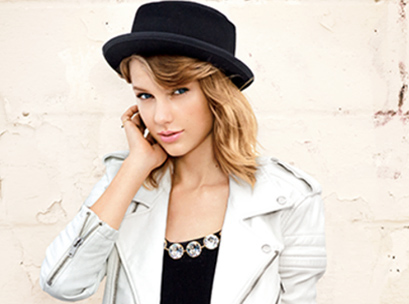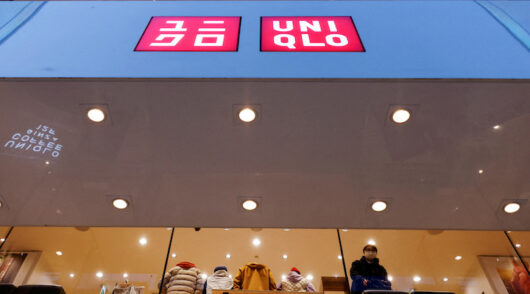Mickey Drexler is the anointed “Merchant Prince” of American retail, the instinctively creative and commercial wizard behind Gap’s glory days and J. Crew’s current time in the sun.
Following her recent blockbuster album launch (two million in sales and counting), US musician, Taylor Swift, could perhaps lay claim to the crown of America’s “Merchant Princess”, and could teach many retailers and shopper marketers a thing or two about the science of ‘selling stuff’.
When I deconstructed and analysed the playbook behind the launch of Swift’s “1989″ album, I began to think that many of the philosophies and tactics align with Drexler’s approach to retail. (And why not? They are both master salespeople.)
So I went back to my notes from a private Westfield World Retail Study Tour conference session with Drexler from a couple of years ago, and I think T. Swift and M. Drexler may well agree on many points.
Start with a vision
Drexler said then that great retail (and business) is always about “someone with a vision and an extraordinary willpower to make it happen”.
Swift has a vision of no less than global pop domination and she is famously focused on achieving her goal.
Don’t be afraid to reinvent yourself
Power brands should never be static. Drexler believes that success is defined by “constant reinvention. Not just once. It’s constant”.
Swift changed course from a country star to a pop diva with her latest album. It was a big bet, and she alienated some of her fan base in the process.
But, as Drexler noted about his own brand reinventions: “You must give up a very large share of your (current) audience if you want to change your company. Just so long as the ‘get’ is bigger than the ‘give up’.”
Taylor Swift’s ‘get’ is massive – country is big, but pop is universal.
Avoid discounting
Drexler abhors marking down product, you never want to be “in the discount business”, he told the Westfield World Retail Study Tour.
He is also controlling about channels to market. “You can’t build a company if everything you have is going to be cheaper somewhere else”.
Swift concurs. In a Wall Street Journal article, Swift wrote, “valuable things should be paid for”. So Swift pulled her catalogue of music from Spotify in order that she could charge what she believes it is really worth.
“Music should not be free” Swift went on to write. To encourage physical CD sales, Swift also added value to the release of the record through Target, including extra songs and songwriting “memos” (Swift singing early versions of three of the 1989 hits into her mobile phone).
Respect your customer
It’s critical to show your customers enormous respect, Drexler said.
A big part of Swift’s success has been her willingness to share her ride to stardom blow by blow with her fan base, and connect with them in an intimate and meaningful way through digital and social media.
One of her tactics in launching the 1989 album was to hold “secret sessions” at her various homes (and her parent’s place in Nashville).
At each session, 89 “Swifties” were invited to hear a sneak preview of the record, and spend time with their idol, which even included Swift baking them cookies.
Another tactic was to issue fragments of song lyrics on Twitter, illustrated by Swift personally.
Tell great stories
Drexler builds his brands on powerful narratives. “Stories in retail are everything,” he said. So too are stories in music.
Swift’s new album is relatively high concept. The title, 1989, refers to the year she was born. As noted by Carl Wilson in his excellent Slate essay, 1989 is cinematic; “this is not a diary. This is a screenplay. Swift isn’t genuinely disclosing her intimate life, but harvesting scraps and rearranging them into a grander narrative”.
The scraps, however, are tantalising for Swifties – is the song “Style” for instance, referring to Swift’s relationship with One Direction’s Harry Styles?
Swift also tells stories through her videos, which in themselves are mini-movies.
Align your brand with other great brands
Drexler is not afraid to complement J. Crew and Madewell with other well crafted and considered brands that add lustre and authenticity to his retail offer.
Equally, Swift has carefully selected American Express, Diet Coke, and Target to increase her exposure and complement and elevate her own brand. (And probably contribute a dollar or two to her war chest as well)
Sweat over the detail.
Drexler is a detail freak. “I go through every single style we buy,” he said.
“(The secret is to) follow your instinct and micro-manage like hell”.
Swift is also a craftsman, poring over this latest album for two years before she was ready to release it to the world.
Just like Drexler, Swift has the heart of an artist and the head of a business person. (I believe that the future belongs to creative business people.) She takes nothing for granted, and works hard to achieve success, which goes from strength to strength.
Billboard announced last week that Swift became the first female artist to replace herself at number one, with Swift’s new single, “Blank Space”, replacing, “Shake it Off”.
It’s yet another crowning achievement for Taylor Swift. And another footnote in the ongoing case study of America’s Merchant Princess.
By Jon Bird






